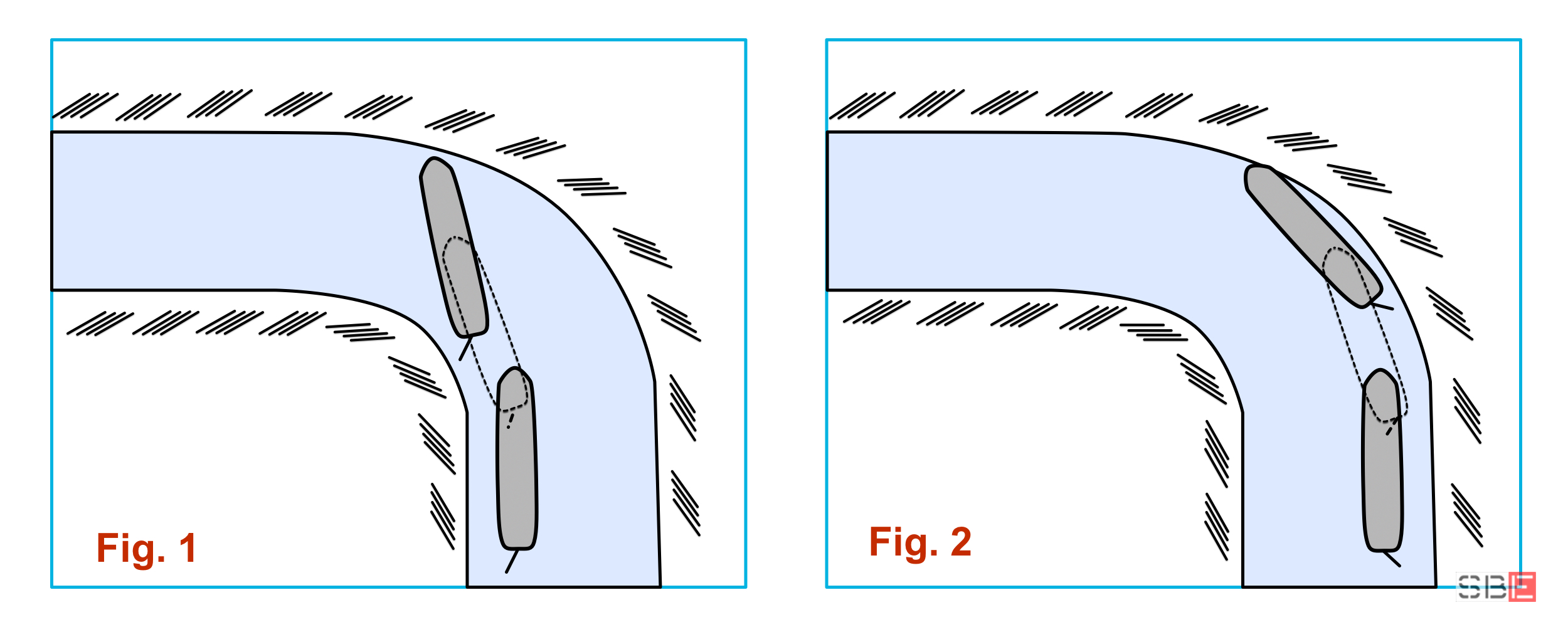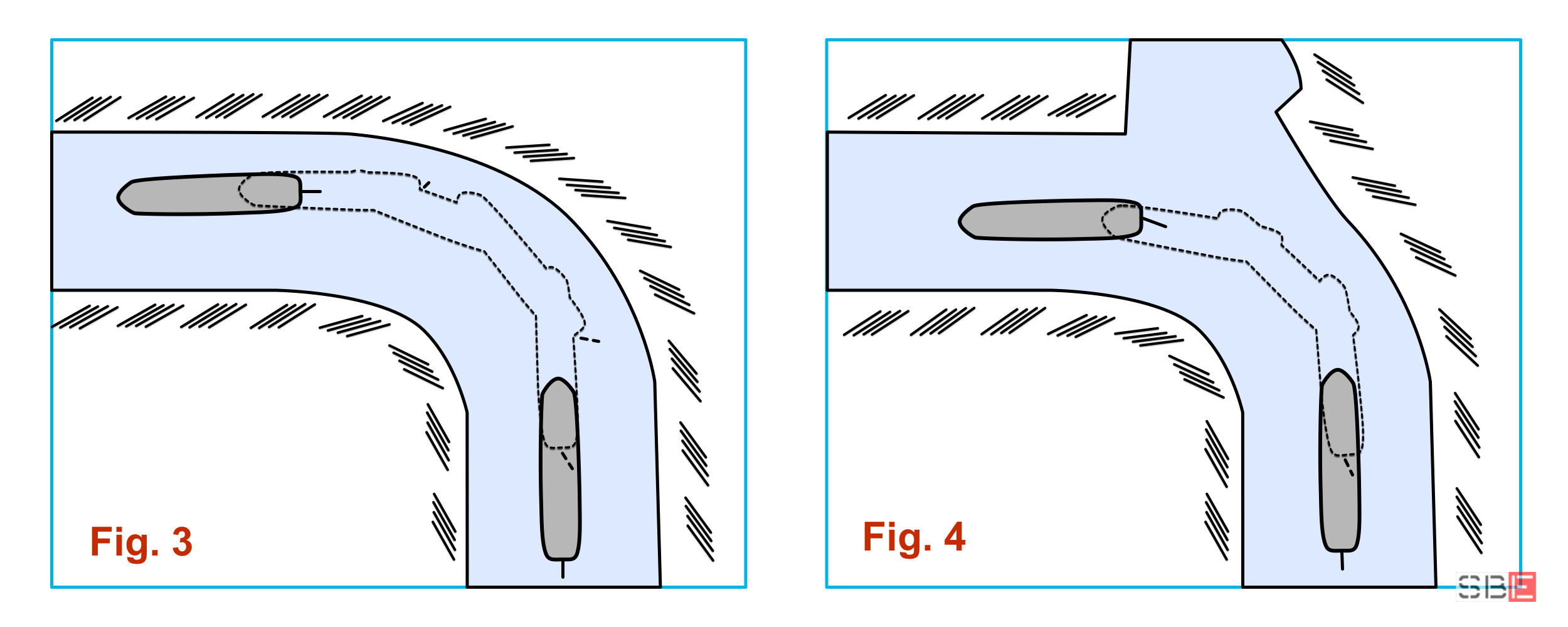Negotiate a Bend
Facing a bend in a canal presents difficulties related to:
the ship:
- the size,
- the draft, &
- the propulsion system.
the morphology of the canal:
- the channel width,
- the radius of the curve, &
- the secondary waterways.
the weather conditions:
- the wind,
- the current, &
- the tide.
Generally speaking, a ship of modest size – relative to the radius of curvature – has less difficulty than a large ship, where precise positioning and correct speed are essential elements. However, there is a general ‘rule of thumb’ regarding entry and exit speeds. Slow down before entering the corner – increase as you exit the corner, just like a car. You can use the engine to amplify the rudder effect without increasing speed when cornering.
The ship’s positioning in the canal is crucial, especially in the case of large, heavy drafted vessels. Side effects are always present and can hinder or help the ship turn. Below we outline four examples of how suction and cushion can affect a ship facing a bend.
In the first case, the ship is close to the side of the corner. In the second case, it is close to the outside. In the third and fourth cases, the vessel is in the centre of the curve.


We can immediately understand how the shoreside reacts to the ship’s proximity.
Fig. 1 – In the first case: The ship too close to the corner must use the rudder hard over to port to maintain the course. The ‘cushion’ pushes the bow as you go through the curve, counteracting the turn. Halfway through the turn, when the ship’s bow moves away, and the stern approaches the edge of the canal, the combined effect of the cushion on the bow and suction on the stern prevent the ship from turning.
Fig. 2 – In the second case: The ship is close to the starboard edge of the curve, compensating with the rudder to keep the course. When turning, the stern is too close to the side. The ‘suction’ prevents the cushion effect from being exploited.
Fig. 3 – In the third case: The ship is in the middle. At the beginning of the bend, the vessel ‘feels’ the bank pushing the bow. It counteracts the tendency to ‘start’ inwards by helming starboard towards the outside. If the curve is complete and closed and there are no other waterways, this contrast can last for the entire length of the curve.
Fig. 4 – In the fourth case: If the curve is not complete, it may be necessary to recover the rudder and continue cornering using the engine and the helm on the right side. A secondary waterway interrupts the canal side effect, which may no longer be sufficient to maintain the ‘rate of turn’ necessary to complete the turning.
In the first two cases, when the cornering is compromised, the use of the engine astern could amplify the rotary moment. Therefore it is advisable to use the engine and the anchor in combination. In addition to slowing the ship quickly, dropping the anchor inside the curve also counter the propeller’s possible adverse paddle-wheel effect. The engine astern may create a water vacuum zone that amplifies the rotational moment, or again, the propeller wake wedges between the shore and the ship and creates a pressure zone. These two effects are difficult to predict and can be suffered, sought or countered.
In the presence of a tidal current, whether it enters (flood) or exits (ebb), it is necessary to anticipate the entry into the bend, except in case 4. When the ebb stream comes from the secondary waterway, it is essential to delay the turning, as, in the middle of the bend, this will push on the exposed side of the ship, pushing it inwards. As the vessel moves around the corner, she will perceive the current differently, and it may be necessary to use the engine & the helm to counteract it.
